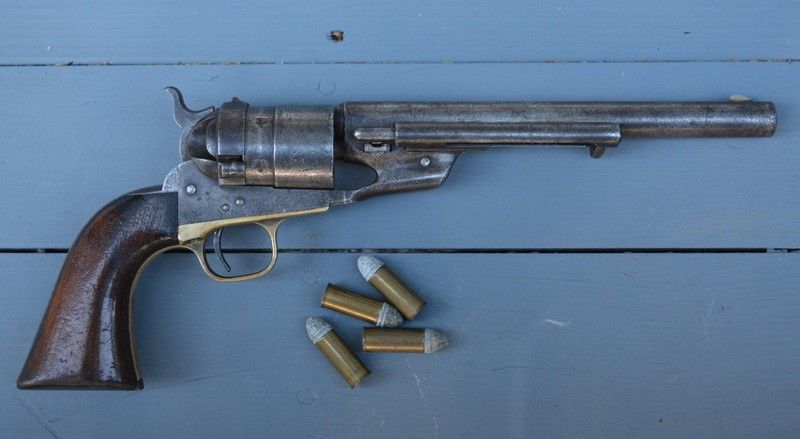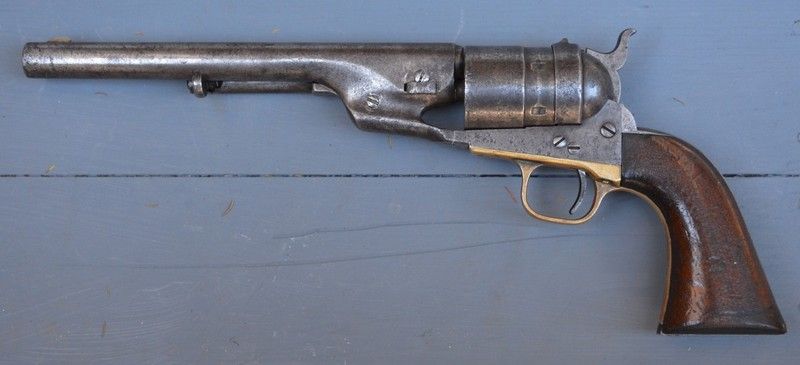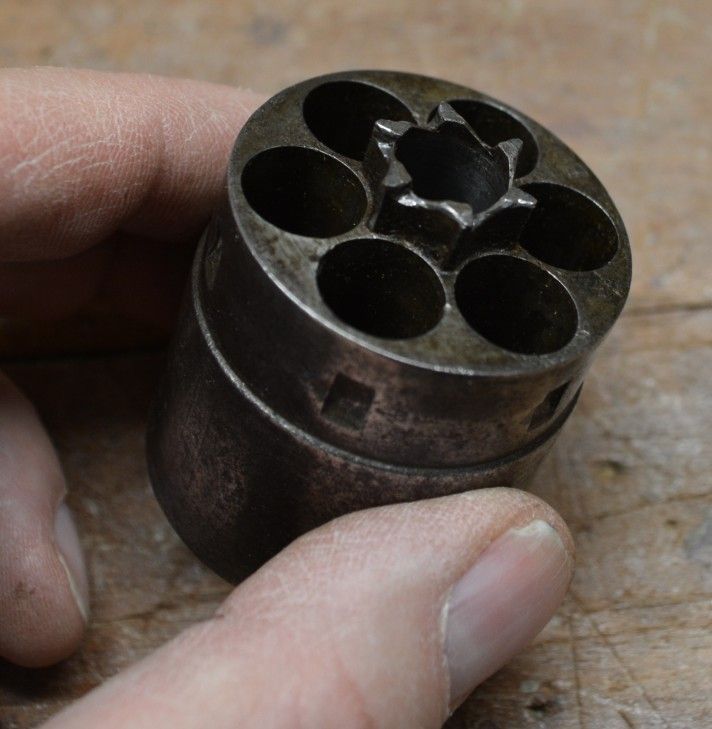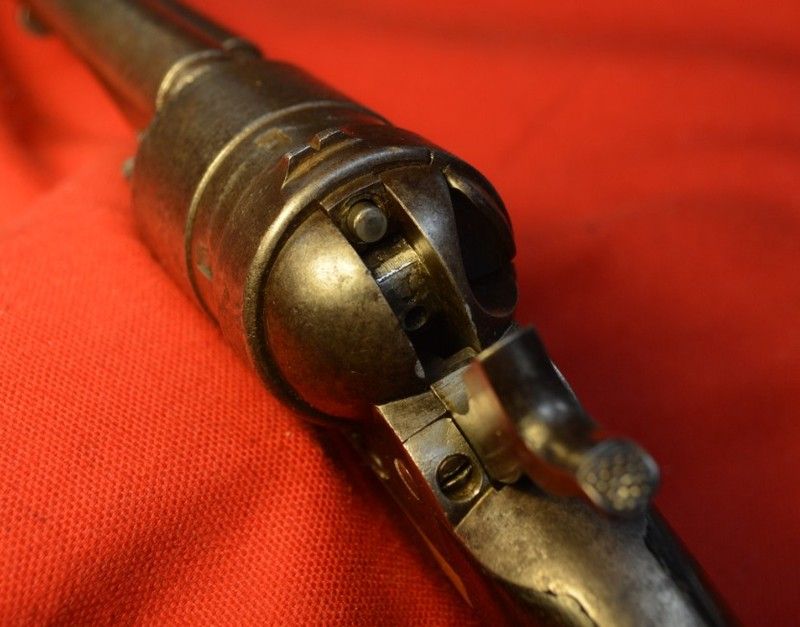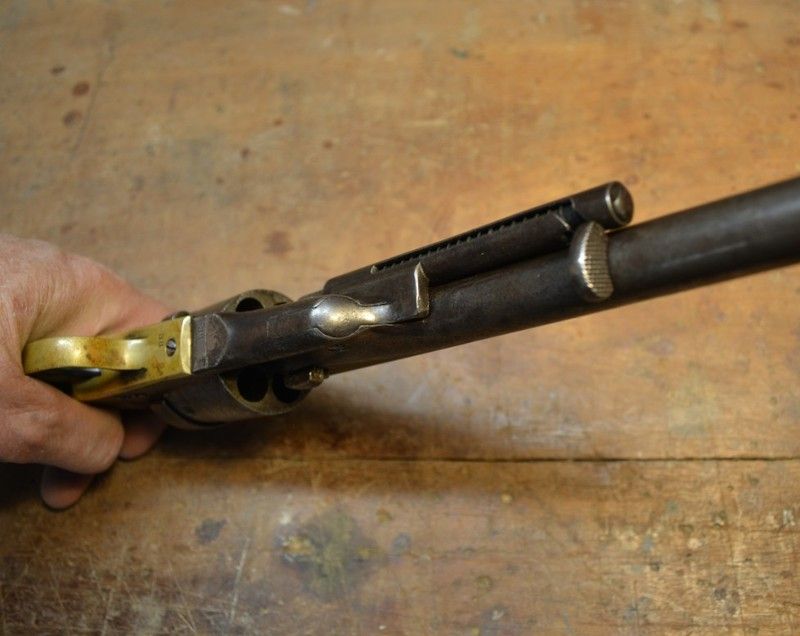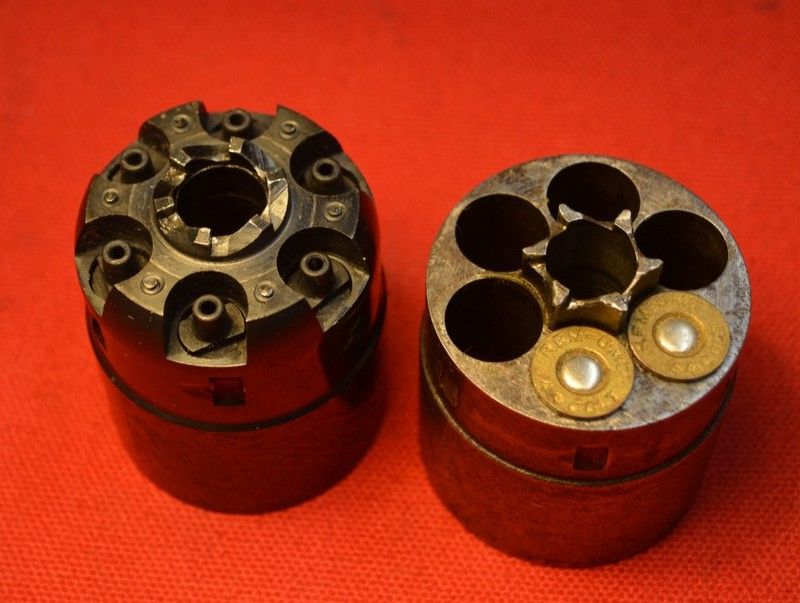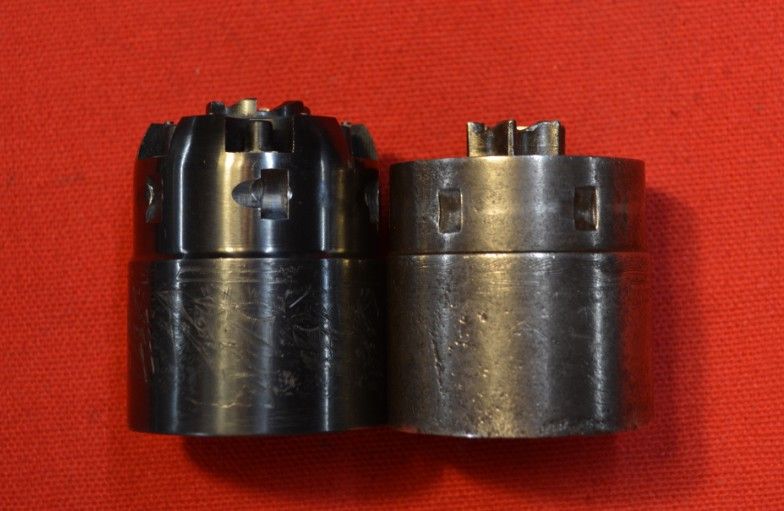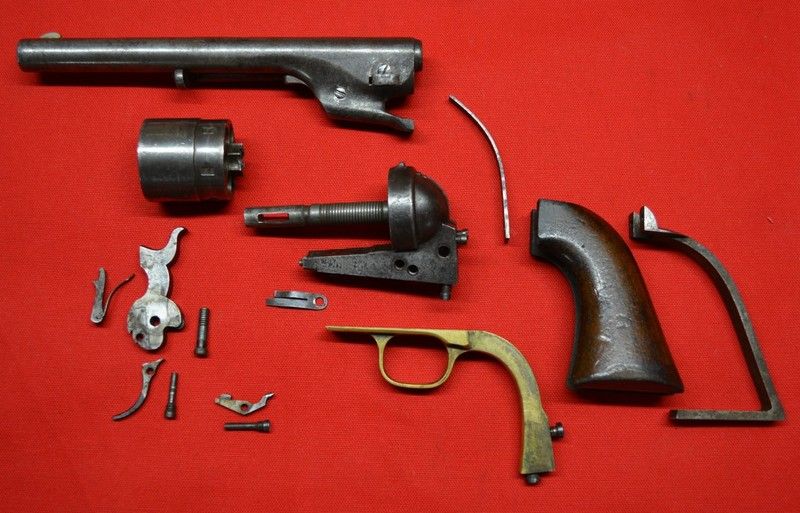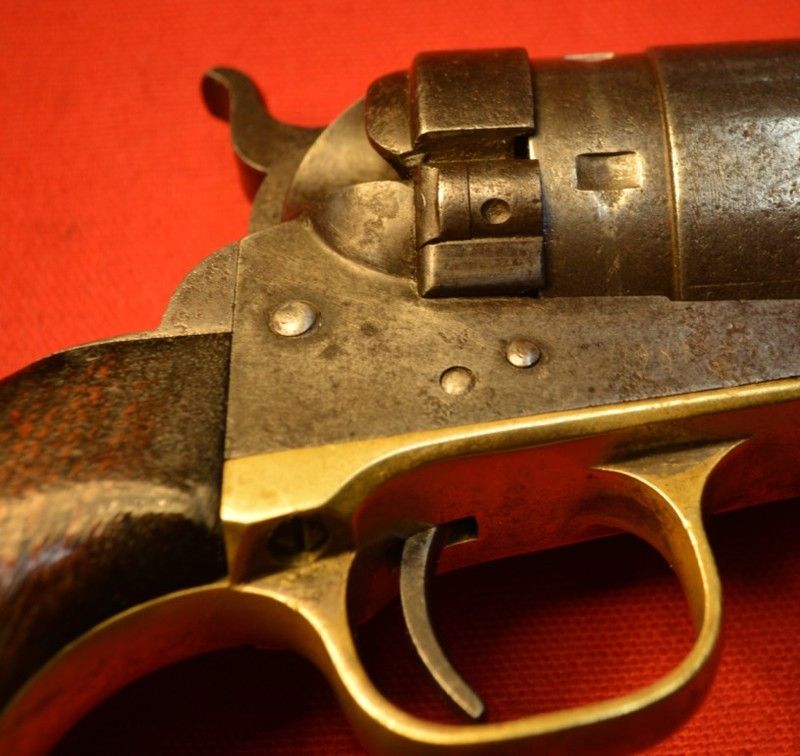Howdy
I agree, identifying the various Colt Conversion Models can be very confusing.
The Thuer Conversion was a not very successful attempt to get around the Rollin White patent for bored through cylinders. There were number of different sized Thuer Conversions, but they all had chambers that were tapered from front to back, and used a cartridge that was tapered from front to back. The cartridges were loaded from the front of the cylinder. The tapered chambers was the way Colt got around the Rollin White patent because 'bored through' was interpreted to mean the diameter was bored straight through with no taper. The Thuer Conversion did not sell very well, only about 5000 were made in 1869 and 1870.
The White patent expired in 1869 and Colt engineers were hard at work coming up with a design that would use conventional cartridges. Charles B. Richards was clever designer working for Colt and he came up with three patents from 1868 through 1871 for improvements to revolvers. Patent 117,461 awarded in July of 1871 was for the 'Richards Conversion'.
The Richards Conversion was mostly done to the 44 Caliber 1860 Army Model, although a few 36 caliber Navy models were converted too.
The frame of the revolver was cut back to receive a Breech Plate. The Breech Plate had a loading gate, not too different than the loading gate that would later appear on the Single Action Army. There was a raised rear sight cast onto the Breech Plate and the there was a spring loaded firing pin contained in the Breech Plate.
The cylinder was cut back at the rear to remove the area where the nipples had been and a centerfire cartridge was designed to fit the bored through chambers. This was the .44 Colt cartridge, but the heeled bullet was actually about .451 in diameter, which was the rifling groove diameter of these '44' revolvers. That's a whole different story.
Lastly, the loading lever under the barrel was removed and a complicated ejector mechanism was built that fit into the recess where the loading lever had been.
Approximately 9000 Richards Conversions were built, both from modified original parts and new parts.
This is an original Richards Conversion with a few original 44 Colt cartridges. As I said, identifying these models can be confusing, this one was mislabeled as a Richards-Mason Conversion when I bought it.
This is the cylinder. The area where the nipples were has been milled away, but the ratchet teeth remain.
This view shows the loading gate open, revealing the ratchet teeth on the cylinder. Yes, there is some gridue on the loading gate, I had not cleaned the gun thoroughly before taking these photos.
This view shows the spring loaded firing pin in the breech plate and the rear sight cast onto the breech plate. You can also see how the hammer face was cut flat where it strikes the firing pin.
This view shows how the ejector rod mechanism was fitted into the hole where the loading lever had been. It is a complicated part, held in place by one screw. The screw holding this one in place is pretty buggered up, so I have not attempted removing the ejector mechanism for a separate photo.
That's all the photos I have for you, to understand differences with the Richards-Mason conversion and the Open Top you will have to look at somebody else's photos.
The Richards Conversion was a clever step forward in cartridge revolver design, but some of the parts were expensive to produce, particularly the extractor assembly. William Mason came up with a simpler design for the extractor. The barrels were all made new, there was no hole for a loading lever. Instead the extractor mechanism had a stud on the side that fitted into a recess on the side of the barrel lug and it was secured by a screw from the opposite side. A much simpler design. The frame mounted, spring loaded firing pin was done away with and a firing pin was mounted in the hammer face. The rear sight was removed from the breech plate and a notch was cut into the hammer much like a percussion Colt to serve as a rear sight. Richards-Mason conversions were made to the 1860 Army revolver, 1851 Navy, 1861 Navy, as well as some pocket models.
Approximately 2,100 Army Richards-Mason Conversions were produced in 1877 and 1888. I don't have any production figures for the 1851 Navy Richards-Mason Conversions, but approximately 2,200 1861 Navy Richards-Mason conversions were made.
Lastly there were the Open Tops. The Open Tops were not really conversions in that they were not conversions of existing percussion revolvers. They were all built from new parts. The identifying features of the Open Tops is the large caliber cylinders were not rebated because they were not made from cut down percussion cylinders. The firing pin was mounted on the hammer, and there was a small raised rear sight at the rear end of the barrel, just in front of the forcing cone. The Open Tops were primarily only produced from February of 1872 until June of 1873. Sorry, I don't currently have any production numbers on the Open Tops.
So........Identification Key:
Raised rear sight on breech plate, spring loaded firing pin, complicated ejector assembly - Richards Conversion.
Firing pin on hammer, small notch on the hammer for a rear sight, simple ejector assembly mounted on the side of the barrel lug - Richards-Mason Conversion.
Firing pin on hammer, rear sight on barrel - Open Top.

